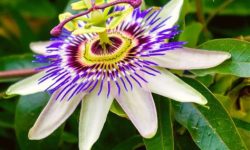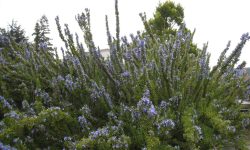The Taste and Flavor Profile of Hibiscus Tea
Introduction to Hibiscus Tea
Hibiscus tea, derived from the vibrant and tropical hibiscus plant, has gained immense popularity in recent years for its refreshing taste and potential health benefits. This bright red herbal infusion offers a unique flavor profile that is both tart and floral, making it a delightful beverage enjoyed in many cultures around the world. With its rich history and wide array of uses, exploring the taste and understanding the flavor profile of hibiscus tea is an exciting endeavor. In this blog post, we will delve into the key ingredients and techniques to enhance the flavor of this captivating tea, allowing you to fully savor each sip.
Introduction to Hibiscus Tea
Hibiscus tea, also known as sorrel or roselle tea, has been enjoyed for centuries for its refreshing taste and numerous health benefits. Made from the dried calyxes of the hibiscus flower, this herbal tea is vibrant in color and has a tart, fruity flavor. It is often consumed hot or cold, depending on personal preference. In this blog post, we will delve into the introduction of hibiscus tea, its origin, and some interesting facts about this delightful beverage.
Origin of Hibiscus Tea:
Hibiscus tea has a long and rich history that can be traced back to ancient civilizations such as Egypt and Sudan. The hibiscus flower, from which the tea is derived, was highly revered for its medicinal properties and was a staple in traditional medicine practices. Over time, this vibrant flower made its way to other parts of the world, including Asia, the Caribbean, and Central America, where it is still enjoyed today.
Health Benefits of Hibiscus Tea:
- Rich in Antioxidants: Hibiscus tea is packed with antioxidants that help to neutralize harmful free radicals in the body. These antioxidants play a crucial role in maintaining overall health and reducing the risk of chronic diseases.
- Lower Blood Pressure: Studies have shown that regularly consuming hibiscus tea may help lower blood pressure levels. This is due to its natural diuretic properties, which help to release excess water and sodium from the body.
- Boosts Immune System: This herbal tea is a great source of Vitamin C, which is known to be essential for a healthy immune system. Drinking hibiscus tea regularly can help strengthen your immune system and protect against infections.
The Flavor Profile of Hibiscus Tea:
Hibiscus tea is renowned for its unique flavor profile. It has a tangy, tart taste with notes of citrus and cranberry. The tea’s vibrant red color adds to its visually appealing nature. Some people prefer to enjoy it as is, while others choose to sweeten it with honey or add a splash of lemon for a refreshing twist. Whether you prefer it hot or cold, hibiscus tea is a delightful beverage that can be enjoyed at any time of the year.
| Summary: |
|---|
| Hibiscus tea, with its vibrant flavor and numerous health benefits, is a delightful beverage enjoyed by many. Its rich history and origin dates back to ancient civilizations, and it continues to be a beloved drink in various parts of the world. The antioxidants present in hibiscus tea help promote overall health, while the tangy flavor and beautiful red color make it a refreshing choice. Whether you are a tea enthusiast or just looking for a new beverage to try, hibiscus tea is definitely worth exploring. |
Key Ingredients in Hibiscus Tea
Hibiscus tea is a popular and refreshing beverage that is made from the dried petals of the hibiscus flower. It is not only delicious but also boasts a number of health benefits. One of the reasons behind the popularity of hibiscus tea is the presence of its key ingredients, which contribute to its unique flavor and numerous advantages. In this blog post, we will delve into the key ingredients that make hibiscus tea a standout option for tea lovers.
One of the main ingredients in hibiscus tea is hibiscus sabdariffa, commonly known as roselle. This vibrant red flower is the star of the show when it comes to hibiscus tea. The petals of the hibiscus sabdariffa plant are carefully harvested and dried to preserve their flavor and health benefits. The tart and tangy taste of hibiscus tea primarily comes from this special ingredient, which lends a refreshing and fruity note to the brew.
In addition to hibiscus sabdariffa, hibiscus tea often includes other key ingredients to enhance its taste and provide additional health benefits. One such ingredient is lemon. The natural acidity and citrusy flavor of lemon complement the tartness of hibiscus, resulting in a well-balanced and zesty cup of tea. Lemon also contains vitamin C, which adds an extra boost of antioxidants to the already nutritious hibiscus tea.
Another frequently used ingredient in hibiscus tea is ginger. This aromatic root adds a warm and spicy element to the tea, elevating its flavor profile. Ginger also brings numerous health benefits to the table, such as anti-inflammatory properties and aiding digestion. The combination of hibiscus, lemon, and ginger creates a delightful and invigorating blend that is perfect for any time of the day.
Aside from these key ingredients, hibiscus tea can also be customized with various additions like mint leaves, cinnamon, or even honey. These optional ingredients not only enhance the flavor of the tea but also provide additional health benefits and personalization options for tea enthusiasts.
List of Key Ingredients in Hibiscus Tea:
- Hibiscus sabdariffa: The vibrant red petals of the hibiscus flower.
- Lemon: Adds a citrusy and tangy flavor, rich in vitamin C.
- Ginger: Provides a warm and spicy taste while offering various health benefits.
- Mint leaves: Optional addition for an extra refreshing and cool note.
- Cinnamon: Optional addition for a hint of spice and warmth.
- Honey: Optional sweetener that can be added to taste.
In conclusion, hibiscus tea owes its unique flavor and health benefits to its key ingredients. From the tart hibiscus petals to the zesty lemon and invigorating ginger, each ingredient plays a vital role in creating a delightful and refreshing cup of tea. Whether you enjoy it hot or cold, plain or with added ingredients, hibiscus tea is a beverage that offers both deliciousness and wellness in every sip.
Exploring the Taste of Hibiscus Tea
When it comes to exploring the taste of hibiscus tea, it is important to understand that this unique beverage offers a distinct flavor profile that sets it apart from other teas. The taste of hibiscus tea can be described as tart, tangy, and slightly sweet. It has a vibrant red color and a refreshing, crisp texture. The flavor of hibiscus tea can vary depending on how it is prepared and what ingredients are included. Let’s take a closer look at the taste of hibiscus tea and how it can be enjoyed.
One of the key elements that contribute to the taste of hibiscus tea is the natural acidity of hibiscus petals. These petals are rich in citric acid, which gives the tea its tangy and tart flavor. The acidity of hibiscus tea is often compared to that of cranberries or lemons. This tartness provides a refreshing and zingy taste that is highly enjoyable, especially when served chilled as an iced tea.
In addition to its tartness, hibiscus tea also offers a subtle sweetness. The natural sugars present in the hibiscus petals provide a delicate sweetness that balances out the tanginess. This sweetness is not overpowering but adds a pleasant depth to the overall flavor profile of the tea. It is important to note that hibiscus tea is naturally caffeine-free, making it a great alternative to traditional caffeinated teas.
Understanding the Flavor Profile of Hibiscus Tea
Hibiscus tea is not only visually stunning with its vibrant color, but it also offers a unique and distinct flavor profile that sets it apart from other types of tea. Understanding the flavor profile of hibiscus tea is essential for tea enthusiasts who want to fully appreciate and enjoy this beverage. In this blog post, we will delve into the various flavors and characteristics that make up the flavor profile of hibiscus tea.
One of the key components of the flavor profile of hibiscus tea is the tartness it possesses. The tea has a naturally tangy and acidic taste, similar to that of cranberries or sour cherries. This tartness adds a refreshing and lively element to the tea, making it a popular choice for those who enjoy tangy and fruity flavors.
In addition to its tartness, hibiscus tea also has a subtle floral undertone. The tea is made from the dried petals of the hibiscus flower, which infuses the beverage with a delicate floral aroma and taste. This floral note adds a touch of sweetness and further enhances the overall flavor experience.
Furthermore, hibiscus tea has a slightly herbaceous quality to it. It carries hints of earthiness and grassiness, which contribute to its complex flavor profile. This herbal aspect gives hibiscus tea a well-rounded and satisfying taste, perfect for those who appreciate more nuanced flavors.
In summary, understanding the flavor profile of hibiscus tea allows tea lovers to fully grasp and explore the diverse range of tastes that this beverage offers. Its tartness, floral undertones, and herbaceous qualities create a harmonious and balanced flavor profile that is both unique and enjoyable. Whether enjoyed hot or iced, hibiscus tea is a delightful beverage that offers a refreshing and revitalizing experience for the taste buds.
- Tartness
- Floral undertones
- Herbaceous qualities
| Flavor Profile | Hibiscus Tea |
|---|---|
| Tartness | ✔️ |
| Floral Undertones | ✔️ |
| Herbaceous Qualities | ✔️ |
Enhancing the Flavor of Hibiscus Tea
Hibiscus tea is known for its vibrant color and refreshing taste. However, if you feel like experimenting with different flavors and enhancing the taste of this floral beverage, there are several ways to do so. By using various ingredients and techniques, you can take your hibiscus tea to the next level and create a truly unique and enjoyable experience.
One way to enhance the flavor of hibiscus tea is by adding natural sweeteners such as honey, agave syrup, or stevia. These sweeteners not only add a touch of sweetness but also complement the tartness of the hibiscus flowers. It is important to taste as you go to find the perfect balance of flavors.
Another way to enhance the flavor is by infusing the tea with other fruits or herbs. For example, you can add sliced citrus fruits like oranges or lemons to the hibiscus tea while brewing. This will not only add a refreshing taste but also provide a hint of tanginess. Alternatively, you can try adding herbs like mint or ginger for a subtle kick of flavor.
- Increase the intensity of the flavor by steeping the hibiscus tea for a longer period of time.
- Experiment with different tea blends by combining hibiscus tea with other types of tea such as green tea or black tea.
- Create a fizzy and flavorful hibiscus iced tea by adding carbonated water or soda to the brewed tea.
| Ingredients and Techniques |
| Natural sweeteners: Honey, agave syrup, stevia |
| Infuse with fruits: Oranges, lemons |
| Infuse with herbs: Mint, ginger |
| Steep for longer time |
| Blend with other teas: Green tea, black tea |
| Add carbonated water or soda for fizziness |
Frequently Asked Questions
What is hibiscus tea?
Hibiscus tea is a herbal tea made from the dried calyces of the hibiscus plant.
What are the key ingredients in hibiscus tea?
The key ingredients in hibiscus tea are dried hibiscus calyces and water.
How does hibiscus tea taste?
Hibiscus tea has a tart and tangy flavor profile, similar to cranberry juice.
What flavors can be enhanced when combining hibiscus tea?
Hibiscus tea can enhance flavors like citrus, ginger, and mint when combined.
What are the health benefits of hibiscus tea?
Hibiscus tea is rich in antioxidants, may help lower blood pressure, and can aid in weight loss.
What are some popular variations of hibiscus tea?
Popular variations of hibiscus tea include adding fruits like peach or pineapple, or infusing it with spices like cinnamon or cloves.
How can hibiscus tea be enjoyed?
Hibiscus tea can be enjoyed hot or cold, and can be sweetened with honey or agave syrup.



